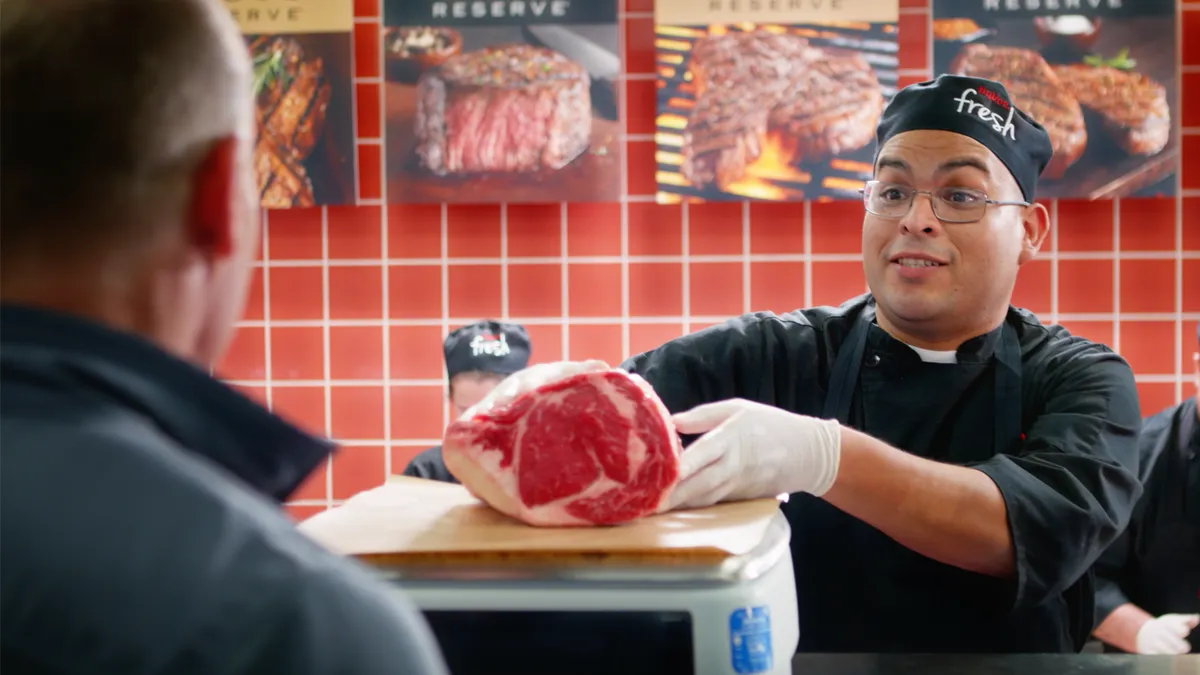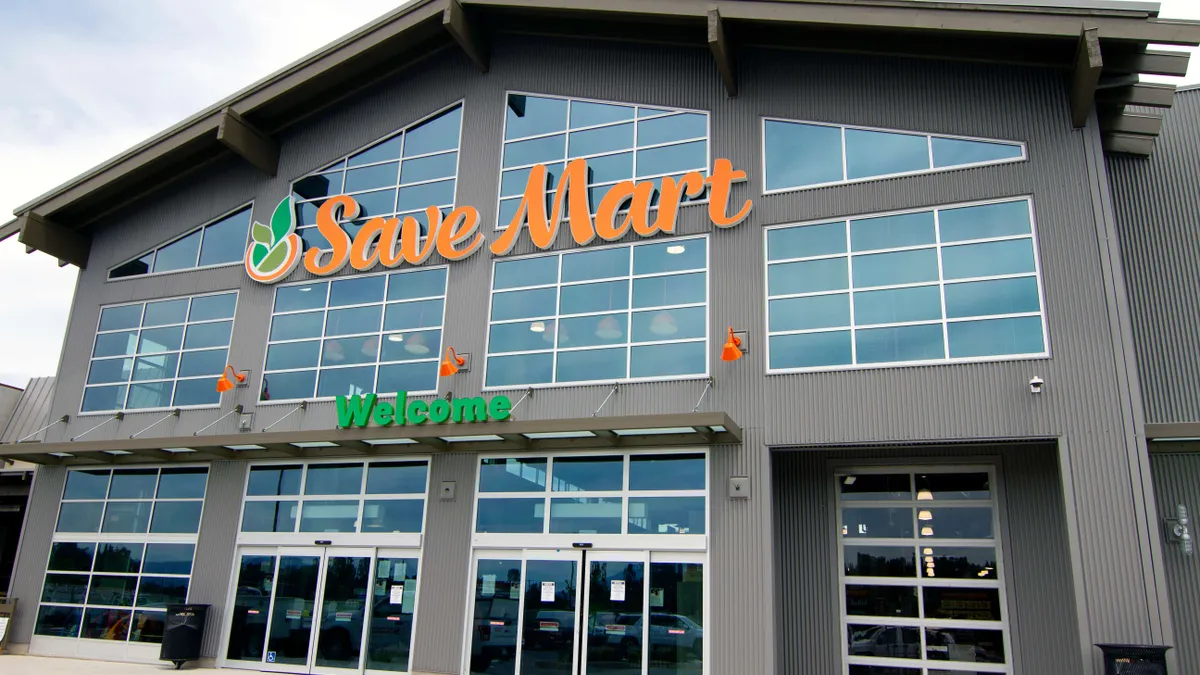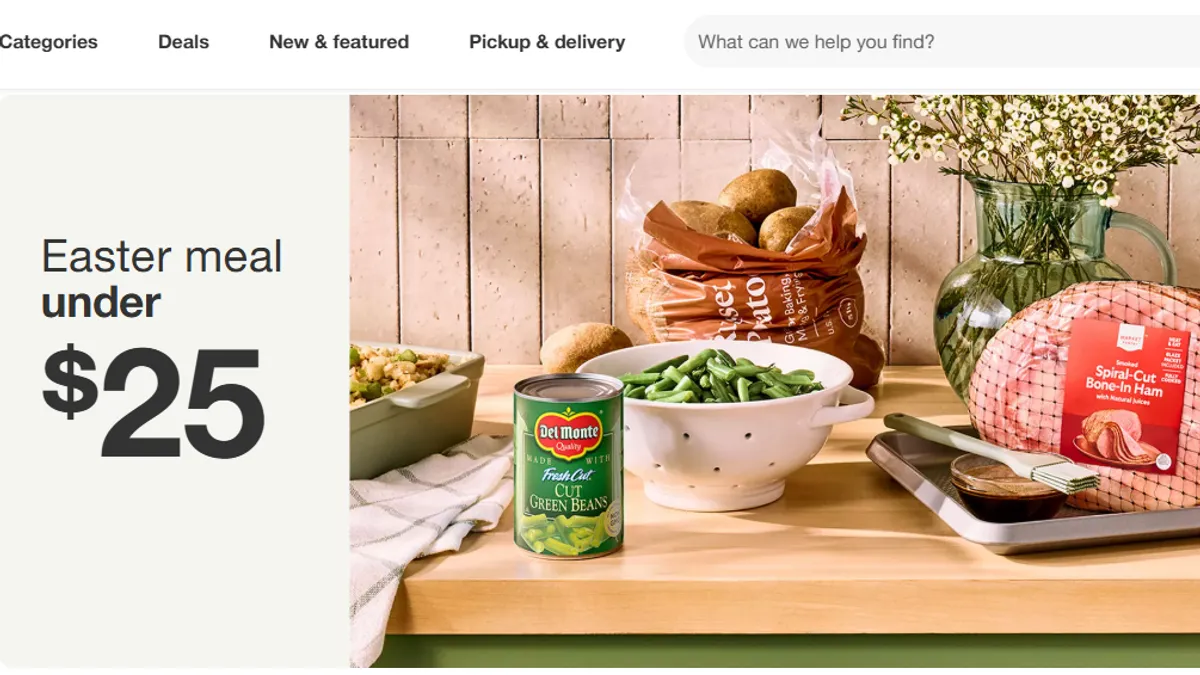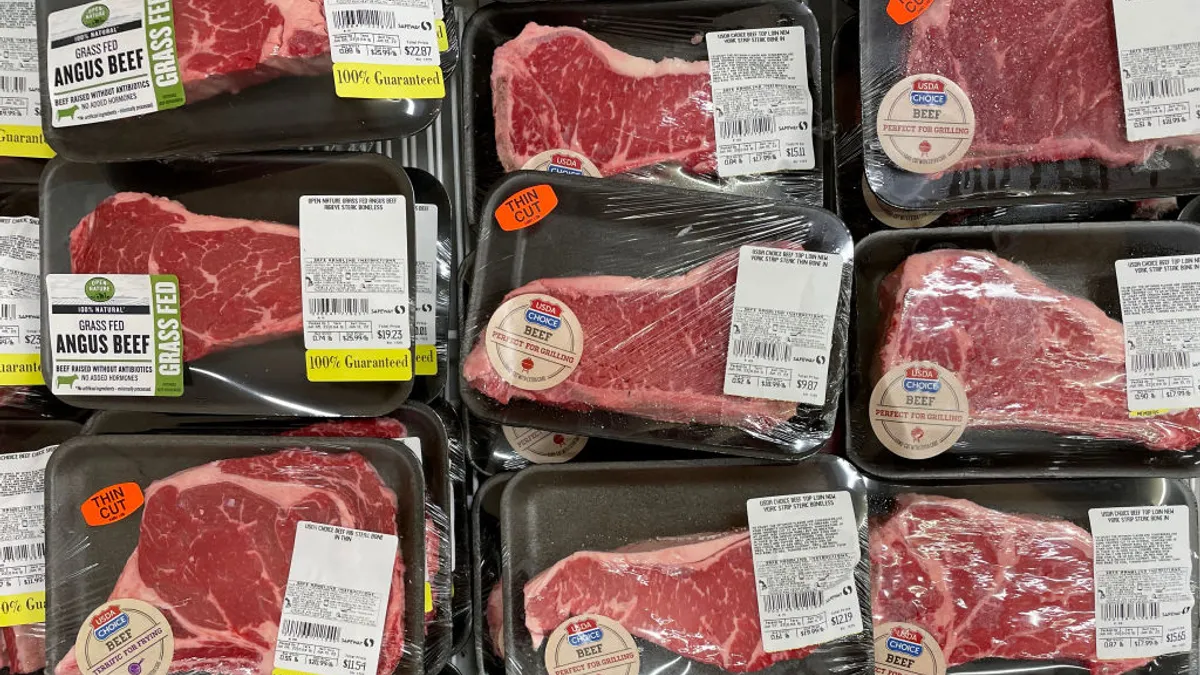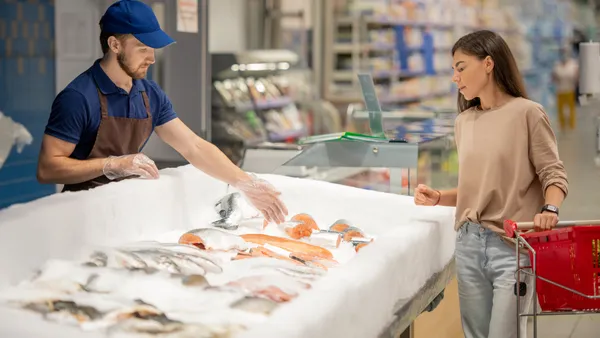"On Special" is a monthly look at top store categories and the retailers that specialize in them.
Like many retailers, Hy-Vee has seen a significant uptick in meat sales beginning last year. Now, with consumer habits evolving as the pandemic still threatens, the retailer located in the heart of Midwestern beef country is looking to lock in shopper loyalty.
Key to achieving this goal, Hy-Vee’s Vice President of Meat and Seafood Jason Pride believes, is making those cuts of chicken, beef and pork even more relevant meal options for shoppers. Store meat departments are going about this in numerous ways. They’re running cooking demos that show customers how to grill a steak or a chicken kabob, and running ads that highlight premium cuts of beef. They’re also adding more sides and perishables that help round out dinner.
“We used to be the center of the plate, but now we feel like we’re offering the whole plate,” Pride said.
Running destination meat departments can be expensive, however. And with a scarcity of labor across the country, matching staffing levels with customer service ambitions can be difficult. Pride said Hy-Vee is trying hard to sell prospective job candidates on not just benefits, but a career path as well.
As consumers return to steakhouses and other restaurants, Hy-Vee is looking to its meat department as a way to continue channeling those at-home cooking and grilling skills customers gained during the pandemic into store sales.
 Best-sellers
Best-sellers
Pride said premium selections like Wagyu beef and Hy-Vee Choice beef became popular early in the pandemic and are still resonating with shoppers.
“They're more willing to try new and different items, maybe splurge a little bit on some premium cuts,” he noted.
Customers are also looking for new options to use on their grills and in their smokers, prompting Hy-Vee to expand its selection of value-added meats like pre-seasoned pork.
 What's trending?
What's trending?
Meat department shoppers are more adventurous these days — but they’re also more health-conscious, said Pride. He’s noticing an uptick in lean proteins like Hy-Vee’s True brand chicken as well as kebabs that feature chicken and pork along with fresh vegetables.
According to the Food Industry Association's most recent Power of Meat report, 72% of consumers say they look for meat they consider better for themselves and for their families, compared to 66% who said the same in 2019.
Building out the plate
Hy-Vee’s meat departments have added more grill accompaniments and sides to their service counters in order to provide more of a meal destination for shoppers. That includes selections like twice-baked potatoes and bacon-wrapped asparagus that are grill-friendly, said Pride.
Stores have also added perishables and value-added selections to the self-service section of the department, which sits right across from the full-service area.
“We're trying to do have every option available, whether you want the full service and you want the expertise, or if you just want to get in quick grab and go and just get on your way," Pride said.
Sampling and demos return
Retailers are starting to add sampling back to their stores, and Hy-Vee is no exception. It’s also trying to take the service up a notch with cooking demos put on by the company’s chefs, many of whom are using meat in their recipes.
Numerous Hy-Vee stores have “chef stations,” Pride said, where these demos unfold. Even stores that don’t have the stations are rolling out portable grilling setups and showing shoppers how to cook a ribeye or sear an ahi tuna steak.
One commonly demoed meat at Hy-Vee is a sirloin strip filet, which Pride said is a high-quality product that many people don’t know how to cook. A company chef will prepare the cut with local seasoning, noting the length of time and temperature needed to cook the steak, then add compound steak butter and a potato skin side.
“I think the biggest opportunity for growth for us is to show them how easy certain things are to prepare,” Pride said.
Promoting premium cuts
With shoppers more willing to splurge, Hy-Vee has been playing up its selection of premium “reserve” beef. This includes its line of Angus beef as well as its Choice Reserve beef, which according to the company reflect specifications that just 6% of cattle can meet.
The choicest selection in Hy-Vee's beef line is the Prime Reserve label — a steakhouse-quality designation that just 8% of beef receives, according to the company.
"We saw that customers really wanted to be able to make those restaurant-quality steaks at home," said Pride.
Beefing up marketing efforts
As shoppers turned away from restaurants during the pandemic, Hy-Vee turned up the volume on its meat marketing. Last year, the grocer launched a campaign that played up the quality of its beef, noting in particular its standards for sourcing and trimming, like the fact that its Choice Reserve beef is trimmed to no more than a quarter inch of fat.
Hy-Vee’s “Best Beef” campaign played out across social media, in-store and TV advertisements. It also included a cooking competition that culminated in a final cook off earlier this month at the Iowa State Fair.
Attracting and retaining workers
Pride wouldn’t say whether or not he’s faced challenges in recruiting workers, as many retailers have recently. He instead pointed to Hy-Vee’s benefits package, which includes a 10% discount for workers and their immediate family, holiday bonus pay and a tuition reimbursement program through Nebraska’s Bellevue University.
Pride also said department managers are trying to win over applicants and retain current employees by highlighting the department’s recent success, and by playing up advancement opportunities within the company. Hy-Vee currently offers a yearlong apprenticeship that trains workers to become meat managers.
“We’re trying to hire for attitude and train for skill,” Pride said. “There's plenty of opportunity to move up and we do a lot of promoting within.”
The state of meat sales in the U.S.
- Meat department sales from January through July of this year totaled $46.2 billion, according to IRI data. That's a 4.5% decline over the same hard-to-match period in 2020, but up 17% over the same span in 2019.
- Price inflation has hit the meat category hard this year. According to IRI data, meat's price per volume during the first seven months of 2021 increased nearly 4% compared with the same period last year, and almost 12% over the same period in 2019. The average price per pound in July was $4.26, up 5% over the same month in 2020.
- According to FMI's Power of Meat report issued in March, 43% of shoppers said they bought more meat and poultry during the pandemic. Four in 10 said they changed their meat-buying habits, driven by a search for better values and meal options as well as a drive to consolidate trips.



